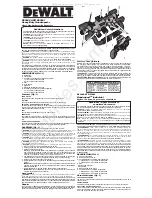
9
3
INSTALLATION / ENVIRONMENTS
Switching on
1. Switch off the load connected to the inverter
2. Switch on the inverter
3. Wait for a few seconds
4. Switch on the load
Switching off
1. Switch off the load connected to the inverter
2. Switch off the inverter
CONNECTING LOADS
1. Make sure that the single load or the combined load requirement of your equipment does not exceed
the inverter’s output rating.
2. Switch off the inverter
3. Switch off the load
4. Plug the cord(s) from the load(s) into the AC receptacle(s) of the inverter
5. Switch on the inverter. Wait for a few seconds
6. The green LED indicator will be lighted to indicate that the inverter is functioning
7. Switch on the load(s)
The inverter is engineered to be connected directly to standard electrical and electronic equipment in the
manner described above.
Do not connect the power inverter to household or RV AC distribution wiring. Do
not connect the power inverter to any AC load circuit in which the Neutral conductor is connected to Ground
(Earth) or to the Negative of the DC (battery) source.
WARNING: Do not connect directly to AC distribution wiring. This inverter is NOT grid interactive.
OPERATING ENVIRONMENT
For best operating results, the inverter should be placed on flat surface, such as the ground, car floor, or other
solid surface. The power cord allows easy positioning of the inverter. The inverter should only be used in
locations that meet the following criteria:
DRY
Do not allow water and/or other liquids to come into contact with the power inverter. In all marine
applications, do not install the inverter below or near the waterline and keep the inverter away from moisture
or water.
COOL
Ambient air temperature should be between 30 degrees F (-1 degree C) non-condensing, and 105 degrees F (40
degrees C). Do not place the inverter on or near a heating vent or any piece of equipment which is generating
heat above room temperature. Keep the inverter away from direct sunlight, if at all possible.
VENTILATED
The unit is cooled by load controlled fan (s). The fan(s) will be normally switched off at low loads to conserve
battery power and will be switched on automatically once the load reaches a certain threshold. Keep the area
surrounding the inverter clear to ensure free air circulation around the unit. Do not place items on or over
the inverter during operation. An additional external fan is helpful if the inverter is operating at maximum
power outputs for extended periods of time. The unit will shut down if the internal temperature exceeds the
operating temperatures. The unit will restart after it cools.
SAFE
Do not use the inverter near flammable materials or in any locations that may accumulate flammable fumes of
gases.





































